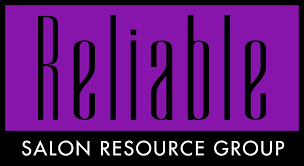Maximizing Productivity with Employee Time Clocks: A Comprehensive Guide

In today’s fast-paced business environment, maximizing workplace productivity is crucial for success. A time clock for employees is more than just a tool for tracking hours; it’s a comprehensive solution that can significantly enhance efficiency and accountability. By automating time tracking, reducing payroll errors, and providing insightful data, a time clock system helps businesses optimize their operations. This article explores the various ways a time clock can boost productivity in the workplace, making it an essential tool for any business looking to improve performance and employee management.
How a Time Clock for Employees Can Improve Workplace Productivity
In any business, time is one of the most valuable resources. How efficiently it is managed can significantly impact the overall productivity and success of an organization. This is where a time clock for employees comes into play. It’s not just a tool for clocking in and out; it’s a powerful system that can drive productivity, reduce errors, and offer insightful analytics to optimize workflow.
The Role of a Time Clock in Enhancing Efficiency
Imagine running a business where employees manually record their work hours. The chances of errors, whether intentional or accidental, are high. This not only leads to potential payroll inaccuracies but also wastes time that could be better spent on productive tasks. A time clock for employees automates this process, ensuring accuracy and saving time.
When employees use a time clock system, it automatically logs their working hours with precision. This data can then be used to streamline payroll processing, ensuring that everyone is paid accurately and on time. This automation reduces the administrative burden on HR and payroll departments, allowing them to focus on more strategic tasks that contribute to the company’s growth.
Accountability and Transparency in the Workplace
One of the biggest challenges in managing a workforce is ensuring accountability. Without a proper system, it’s difficult to track whether employees are adhering to their scheduled hours. A time clock for employees brings transparency to the workplace by providing a clear record of attendance and work hours.
This transparency is essential for fostering a culture of trust and accountability. Employees know that their time is being accurately tracked, which can reduce instances of tardiness or early departures. It also ensures that everyone is treated fairly, as the system doesn’t allow for any discrepancies or favoritism. This level of fairness can improve employee morale, which in turn boosts productivity.
Reducing Payroll Errors and Labor Costs
Payroll errors can be costly for businesses. Overpayments, underpayments, or incorrect tax withholdings can lead to significant financial losses and employee dissatisfaction. A time clock for employees minimizes these errors by ensuring that the exact hours worked are recorded and used for payroll calculations.
Additionally, the data from time clocks can help businesses analyze labor costs more effectively. By understanding the distribution of hours worked across different departments, managers can make informed decisions about where to allocate resources or where cost-cutting measures might be necessary. This kind of data-driven decision-making is critical for optimizing labor costs and improving overall efficiency.
Insights and Analytics for Better Decision Making
Modern time clocks are equipped with advanced features that provide valuable insights into employee productivity. By analyzing patterns in attendance and work hours, businesses can identify trends that might be affecting productivity. For example, if a particular department consistently clocks in late, it might indicate an underlying issue that needs to be addressed.
These insights can also help in workforce planning. Knowing when your team is most productive can inform scheduling decisions, ensuring that peak times are adequately staffed. Conversely, understanding when productivity dips can lead to strategic interventions, such as offering additional training or revising workflows.
Flexibility and Remote Work Management
The rise of remote work has brought new challenges to time management. A time clock for employees that supports remote logging ensures that businesses can maintain productivity even when employees are working from different locations. This flexibility is crucial in today’s work environment, where hybrid work models are becoming increasingly common.
With remote time tracking, employees can log their hours from anywhere, providing managers with a clear view of who is working and when. This capability not only helps in managing remote teams but also ensures that remote workers are held to the same standards of accountability as those in the office.
Compliance and Record-Keeping
Compliance with labor laws is another critical area where a time clock for employees proves invaluable. Labor regulations require businesses to maintain accurate records of employee work hours. Failure to do so can result in fines or legal disputes. A time clock system ensures that businesses have a reliable and easily accessible record of all hours worked, which is essential for compliance.
Moreover, these records can be used to resolve disputes over pay or hours worked, providing clear evidence in the event of any disagreements. This not only protects the business from legal challenges but also contributes to a fair and transparent work environment.
Conclusion
Incorporating a time clock for employees into your business operations is more than just a convenience; it’s a strategic move that can significantly improve productivity, reduce errors, and enhance overall efficiency. From automating payroll to providing valuable insights into workforce management, the benefits of a time clock system are undeniable. As businesses continue to navigate the complexities of the modern workplace, having a reliable and efficient time tracking system is essential for staying competitive and ensuring long-term success.
FAQs
What is a time clock for employees?
A time clock for employees is a system used to record the start and end times of employees’ workdays. It can be a physical device or a software solution that logs hours worked, which is then used for payroll and attendance tracking.
How does a time clock improve workplace productivity?
A time clock improves productivity by automating time tracking, reducing payroll errors, ensuring accountability, and providing valuable data insights. This allows businesses to optimize their workforce management and reduce time spent on administrative tasks.
Can a time clock be used for remote workers?
Yes, many modern time clocks support remote logging, allowing employees to clock in and out from different locations. This is especially useful for managing remote or hybrid teams.
How does a time clock help with compliance?
A time clock ensures that businesses maintain accurate records of employee work hours, which is essential for compliance with labor laws. It also provides clear documentation in case of disputes over hours worked or pay.
What features should I look for in a time clock system?
When choosing a time clock system, look for features such as remote logging, integration with payroll software, data analytics, and ease of use. These features will help maximize the system’s benefits for your business.



